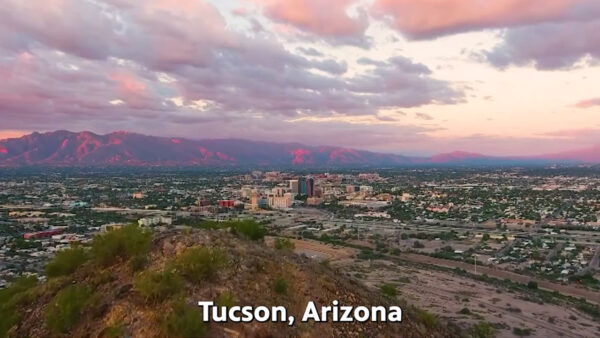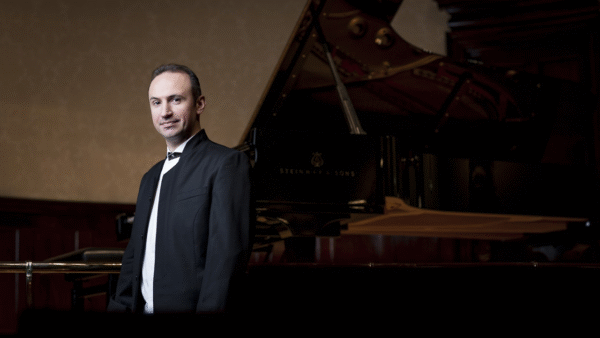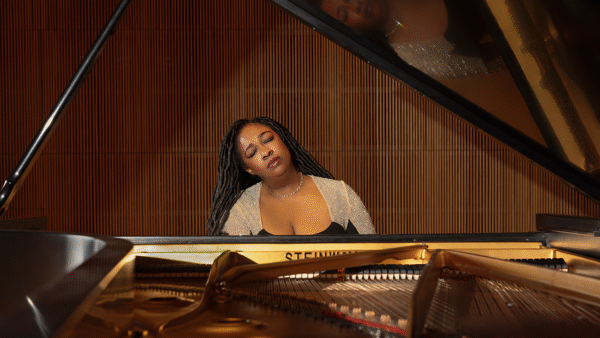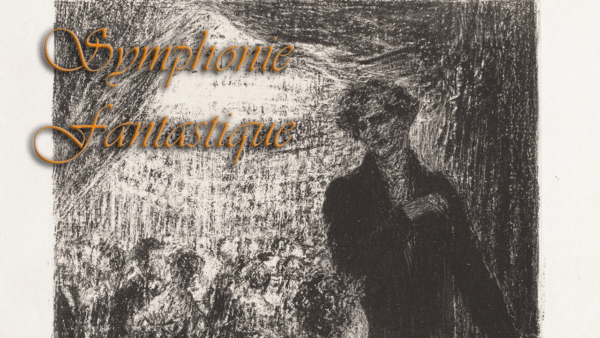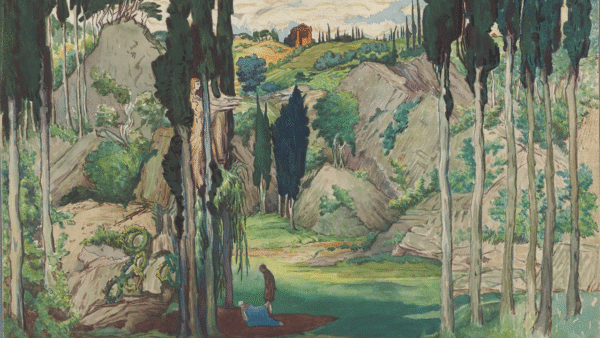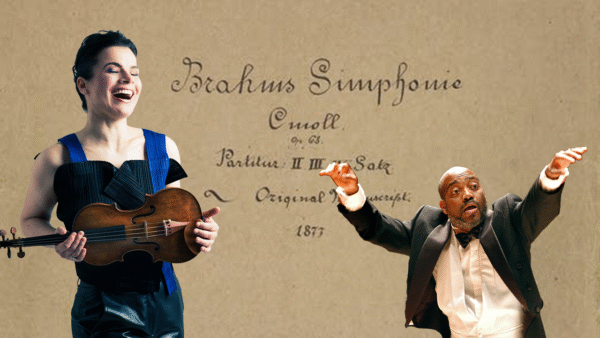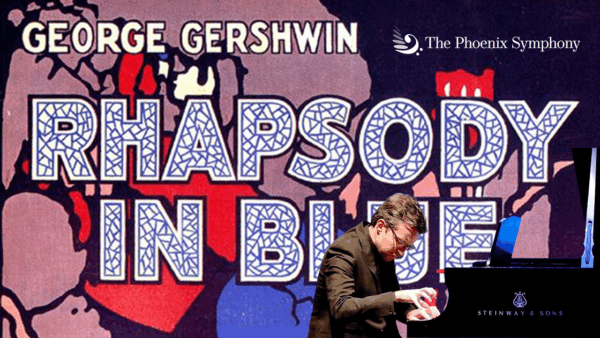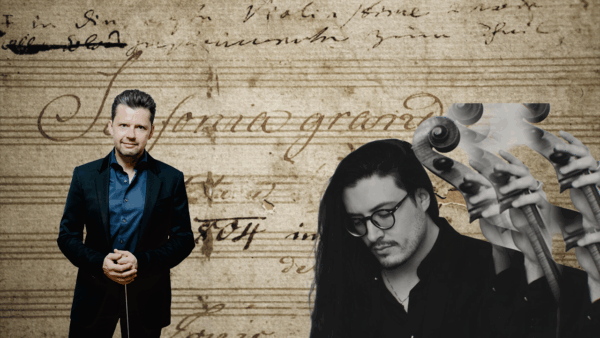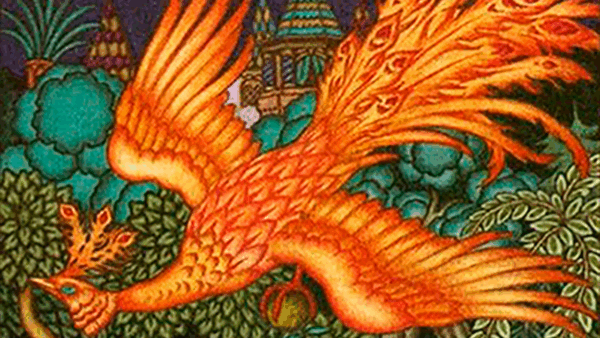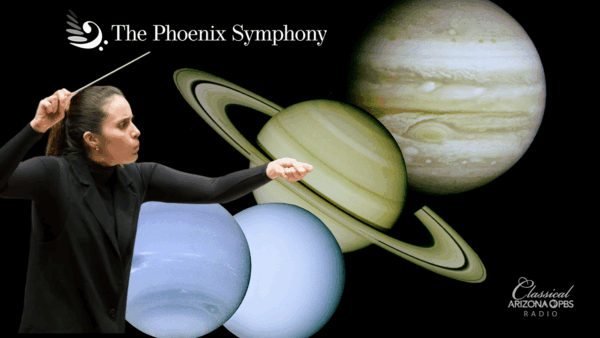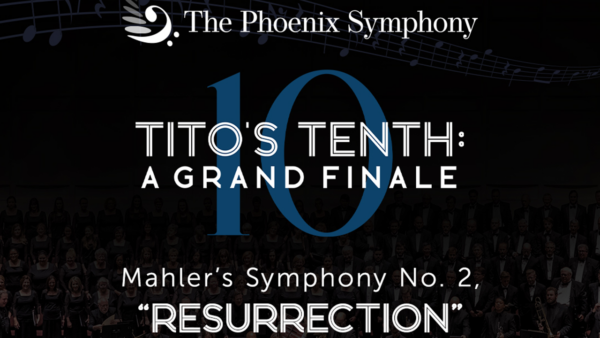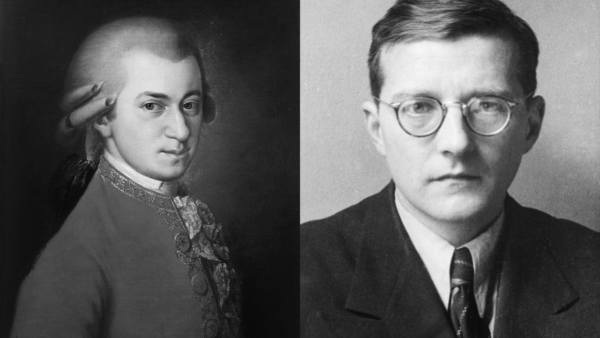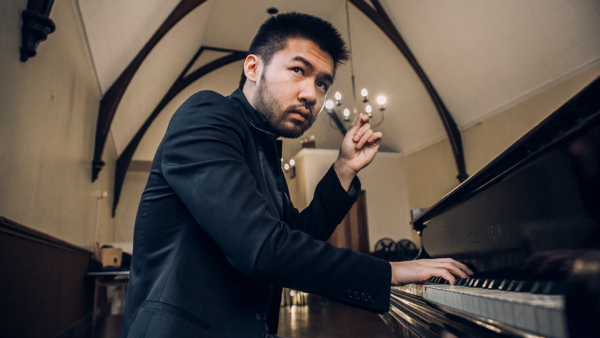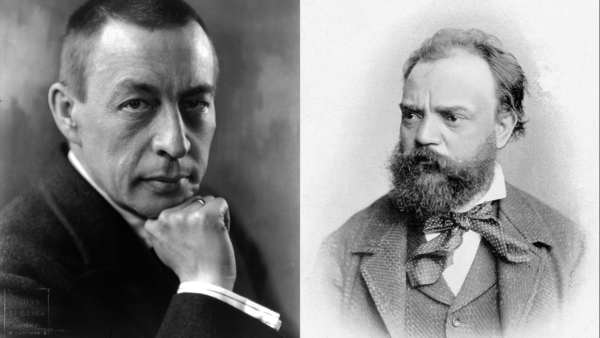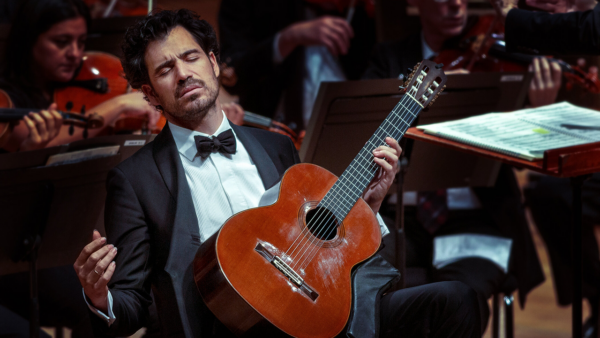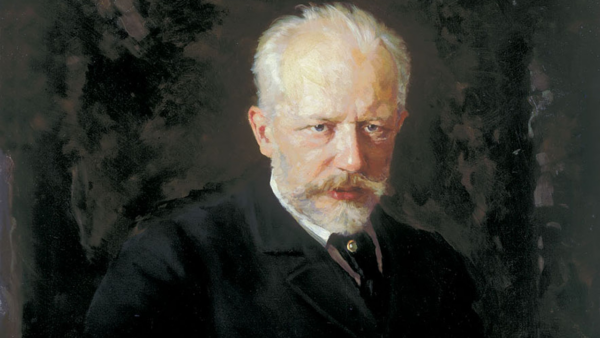Beethoven’s “Eroica” Symphony
Oct. 8
Thrilling and defiant, the finale of Beethoven’s Symphony No. 3 blazes with the energy that Beethoven’s Symphony No. 3, the “Eroica,” isn’t just another symphony — it’s the moment Western music changed course. When its bold opening chords sounded in 1805, audiences were stunned by its scope, drama, and emotional force. Beethoven had transformed the elegant Classical symphony into something vast and urgent, music that could grapple with heroism, grief, and the triumph of the human spirit. Two centuries later, the Eroica still feels like a revelation, blazing with energy and daring us to listen with fresh ears.
You can experience that revolutionary spirit on Wednesday, October 8, 2025, when The Phoenix Symphony’s live performance of the Eroica airs as part of our 11-part broadcast series. Tune in at 7 p.m. on KNAU Arizona Public Radio, enjoy rich Dolby Digital Surround Sound on DTV 8.5 Classical Arizona PBS, or catch it on Classical 89.5 KBACH. These broadcasts bring the magic of Symphony Hall straight to your living room, car, or headphones.
At the heart of this week’s program is Beethoven’s monumental score, written between 1803 and 1804. It still respects the bones of symphonic form — four movements, themes developed and recast — but everything inside those outlines is expanded. The first movement begins with two defiant chords, then plunges into music that strides forward with daring ideas, rhythmic surprises, and an almost reckless energy. The second movement is a Funeral March of extraordinary depth, solemn yet deeply human, a meditation on loss and resilience. Beethoven uses hushed strings, poignant woodwinds, and solemn brass to create a sound world that feels at once intimate and epic. A bracing scherzo follows, its quicksilver rhythms erupting with vitality, and the trio section, led by exuberant horns, provides a rustic splash of joy. The finale is a massive set of variations that grows from a simple folk-like theme into a triumphant hymn, showing just how far Beethoven could stretch a single idea.
The story behind the Eroica is as dramatic as the music itself. Beethoven admired the ideals of the French Revolution and saw Napoleon Bonaparte as their living embodiment. Early drafts of the score bore the name “Bonaparte,” and the work was conceived as a tribute to a leader who seemed to embody liberty and justice. But when Napoleon crowned himself Emperor, Beethoven’s admiration turned to outrage. According to his student Ferdinand Ries, Beethoven tore the dedication page in anger, later renaming the score “Sinfonia Eroica… to celebrate the memory of a great man.” That torn title page has become a legend, symbolizing the composer’s fierce independence and unwillingness to flatter tyranny.
Part of the magic of the Eroica lies in how it speaks both to the public and to something deeply personal. Beethoven wrote it around the time he was confronting the reality of his growing deafness — a crisis that might have silenced another artist. Instead, he poured his defiance and resilience into this music. Listeners often hear the symphony as a journey: an opening full of bold aspirations, a solemn march through grief, a burst of vitality in the scherzo, and a finale that celebrates hard-won triumph. It is a work that insists on the value of perseverance and hope, even when life delivers bitter blows.
Musicians and scholars still marvel at how radically Beethoven expanded the scope of the symphony. Its length alone was unprecedented, nearly twice that of the symphonies of Haydn or Mozart. More than that, it opened up an emotional landscape that composers of the 19th century — from Schumann and Brahms to Mahler — would explore for generations. The Eroica is both a heroic portrait and a mirror of the human condition, speaking as powerfully to us today as it did to its first audiences. From there we leap to Tchaikovsky’s Variations on a Rococo Theme, a piece that balances elegance and Romantic warmth. Written in 1876 as a tribute to Mozart — Tchaikovsky’s lifelong idol, his “musical Christ” — it drapes an 18th-century grace over melodies brimming with heart. The cello takes center stage, trading playful banter and lyrical song with the orchestra through a sequence of variations that are as delightful to watch as they are to hear. It’s Tchaikovsky at his most relaxed, savoring clear textures and sweet lyricism while still letting his emotional voice shine through.
Adding a dash of spontaneity to the evening is our “mystery piece,” a tradition in this series. Each week, the conductor picks an unlisted work — something they love, something that complements the program, or simply something to surprise and delight. No spoilers here, but past selections have included Shostakovich’s wry ballet suites and other unexpected gems. It’s a reminder that live concerts thrive on discovery.
Guiding the orchestra through this kaleidoscope of music is guest conductor Julian Rachlin. Known internationally as both a violinist and conductor, Rachlin brings a dynamic blend of precision and imagination to every performance. He has appeared with major ensembles from the Chicago Symphony to the Vienna Symphony and is admired for connecting classical music to other art forms, commissioning new works, and mentoring young musicians. His leadership infuses familiar pieces with a sense of adventure while illuminating lesser-known gems.
Joining him for the Rococo Variations is Santiago Cañón-Valencia, a Colombian cellist whose artistry spans far beyond the concert stage. Described as “technically flawless” and “authentic to the core,” Cañón-Valencia made his debut at six and has since performed with renowned orchestras worldwide. He is also a composer, arranger, photographer, and painter, known for bringing fresh vitality to everything he touches. In Tchaikovsky’s score, his blend of clarity and expressive warmth promises to make the music dance and sing.
With music that stretches from hidden Soviet treasures to Romantic elegance and Beethoven’s audacious heroism, this week’s concert captures what makes live performance so rewarding: variety, surprise, and an emotional arc that lingers long after the final note. Whether you tune in for the sweep of the Eroica, the charm of Rococo, or the thrill of uncovering something new, Wednesday’s broadcast promises to be an evening to remember. Join us Wednesday evenings at 7 p.m. on KNAU Arizona Public Radio, with spectacular Dolby Digital Surround Sound on DTV 8.5 Classical Arizona PBS, and Classical 89.5 KBACH.
Featured in this episode:
Weinberg – Sinfonietta No. 1
Shostakovich – Suite from The Age of Gold
Tchaikovsky – Variations on a Rococo Theme, Op. 33 – Santiago Cañón-Valencia, cello
- I. Moderato assai quasi Andante – Thema: Moderato semplice
- II. Var. I: Tempo della Thema
- III. Var. II: Tempo della Thema
- IV. Var. III: Andante
- V. Var. IV: Allegro vivo
- VI. Var. V: Andante grazioso
- VII. Var. VI: Andante
- VIII. Var. VII: Andante sostenuto
- IX. Var. VIII e Coda: Allegro moderato con anima
Beethoven – Symphony No. 3 in E-Flat Major, Op. 55, Eroica
- I. Allegro con brio
- II. Marcia funebre: Adagio assai
- III. Scherzo: Allegro vivace
- IV. Finale: Allegro molto

